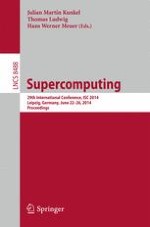2014 | Buch
Supercomputing
29th International Conference, ISC 2014, Leipzig, Germany, June 22-26, 2014. Proceedings
herausgegeben von: Julian Martin Kunkel, Thomas Ludwig, Hans Werner Meuer
Verlag: Springer International Publishing
Buchreihe : Lecture Notes in Computer Science
